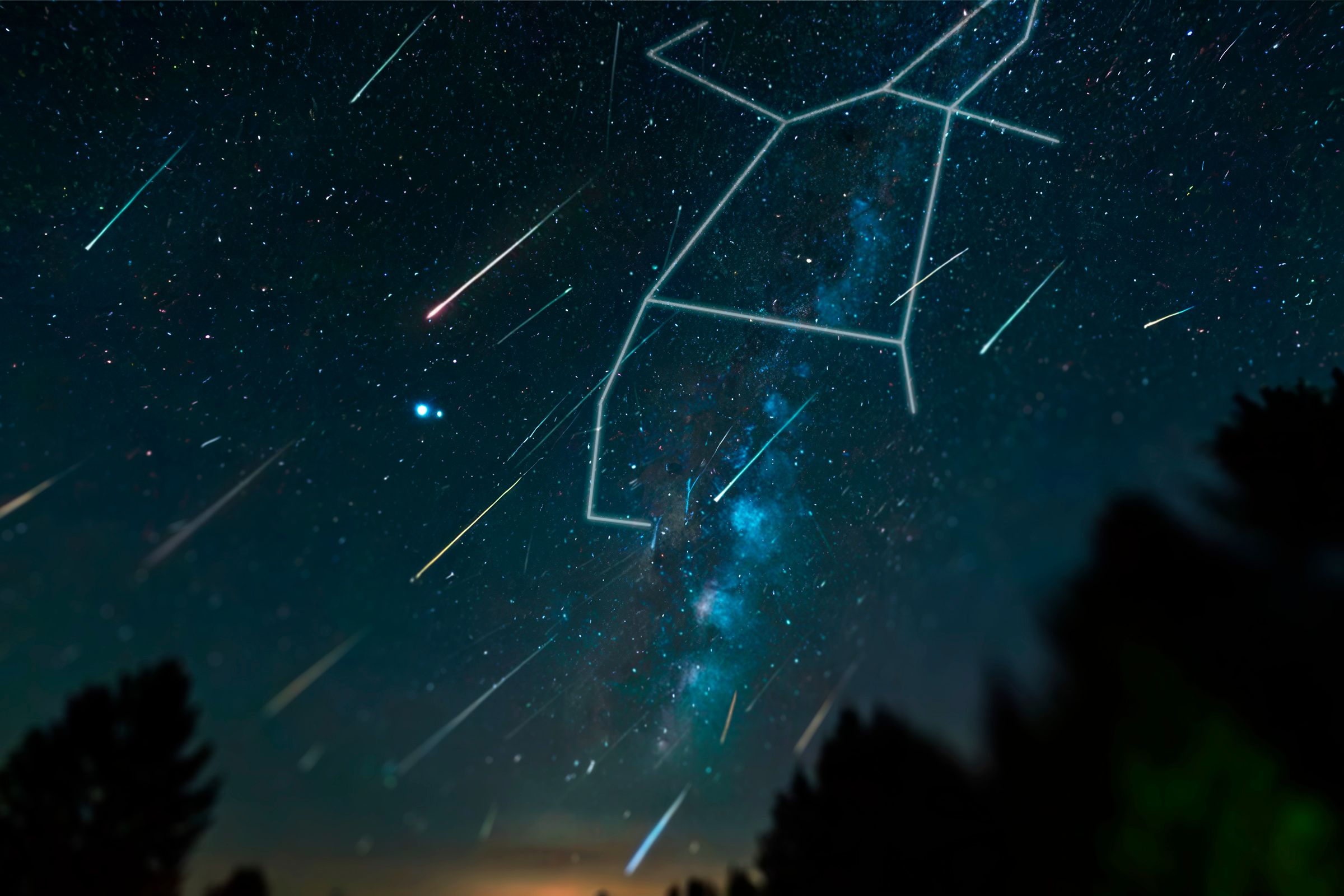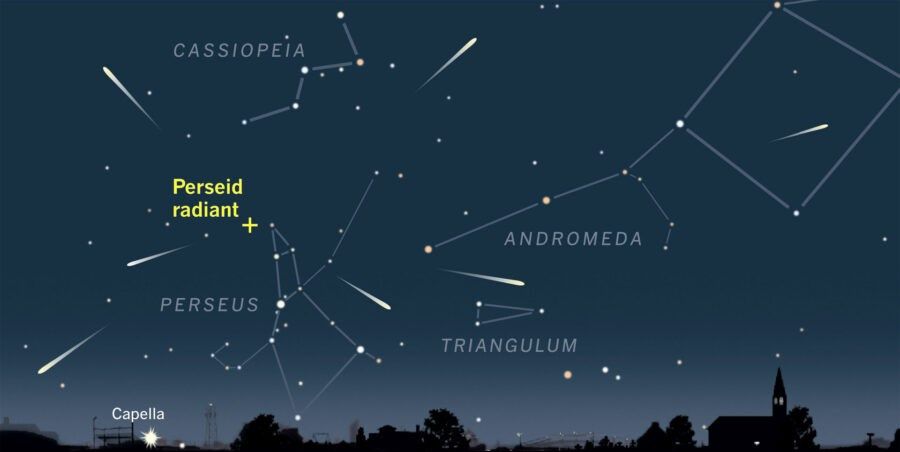
Your Comprehensive Checklist for Enjoying the Stunning Perseid Meteor Display

Your Comprehensive Checklist for Enjoying the Stunning Perseid Meteor Display
Key Takeaways
- The Perseid meteor shower will be most visible in the Northern Hemisphere from July 17 to August 24, with peak activity on August 12-13.
- To view the meteor shower, locate the Perseus constellation, best seen in the early hours after midnight and away from city lights.
- To photograph the meteor shower, use a tripod, adjust your camera’s settings, and consider apps like NightCap for capturing moving objects.
The Perseid meteor shower is known for being the most prolific annual astronomical display in the Northern Hemisphere, offering many bright, fast meteors with long-lasting trains. Let’s look at what the Perseid meteor shower is, how you can see it, and how to capture it on camera.
What and Where Is the Perseid Meteor Shower?
The Perseid meteor shower is caused by small pieces of debris falling from and trailing behind the 109P/Swift-Tuttle comet as it nears the sun. This comet was discovered by astronomer Lewis Swift in 1862 and verified by fellow scientist Horace Parnell Tuttle a few days later. As the Earth passes through Swift-Tittle’s solar orbit, the trailing debris collides with our atmosphere at around 36 miles per second to create a stunning meteor display. It’s called the Perseid meteor shower because the shoots of light appear to originate near the Perseus constellation, but, in fact, the shower has nothing to do with Perseus other than this apparent positional coherence.
Even though our planet only passes through Swift-Tuttle’s trail once a year, we’re treated to this spectacular meteor shower for over a month. More specifically, it lasts from July 17 to August 24, peaking on the night of August 12-13. The Perseus constellation is best viewable in Northern-Hemisphere skies. However, if you’re trying to catch a glimpse of the meteor shower from the Southern Hemisphere, you shouldn’t be disappointed if you keep your eyes fixated in a northerly direction.
How to Watch the Perseid Meteor Shower

skyandtelescope.org
To find the Perseus constellation, which is said to represent the form of a man, first look for its neighboring constellation, Cassiopeia, which is easier to spot with its distinctive “W” or “M” shape. Then, you’ll find the less prominent Perseus constellation alongside.
There are many stargazing apps you can use to help you locate phenomena in the sky. SkySafari is useful because you can type the name of the constellation or star you’re searching for, and it’ll help you center the object. However, don’t worry about focusing your gaze solely on Perseus for the Perseid meteor shower—you’ll see the shooting trails of light all over the night sky.
The best time to see the Perseid meteor shower is in the early hours of the peak morning, so after midnight on August 12. You’ll have much more of a chance of seeing the display if you have a dark sky away from city lights (use a light pollution map to help you with this) and a wide field of view.
The beauty of meteor showers is that you don’t need any special equipment to see them. Once you’ve located a safe spot, set a blanket on the ground and simply look upwards. Even though meteor showers are infamously unpredictable, the Perseid meteor shower is so prolific that you can expect to see over 50 an hour in the right conditions. Once your eyes have adjusted to the darkness, lie back and enjoy the spectacle.
The moon will be in its first-quarter phase on August 12, so you shouldn’t be blighted by too much natural light pollution. What’s more, it will drop below the horizon after midnight (and around an hour earlier in the UK), so it’s worth delaying bedtime to appreciate the darkest skies. You may be a bit more tired in the morning, but you’ll get to see something cool.
The biggest obstacle to shooting star success is something you can’t control and the biggest thorn in any stargazer’s side—clouds. However, since the peak of the Perseid meteor shower is during the Northern Hemisphere’s midsummer period, those north of the equator can hope for a greater chance of an enjoyable night than during the spring’s Lyrid meteor shower. Nevertheless, even if you do get undesirable weather during the peak, you’ll catch some shooting stars at some point between July 17 and August 24 if you find the right conditions.
How to Photograph the Perseid Meteor Shower
Just witnessing the Perseid meteor shower should be enough to wow you, but photographing a streak of dust burning up in our atmosphere can add an extra bit of joy to this addictive hobby. The first thing you’ll need is a sturdy tripod. For the best chance to catch a shooting star, you’ll need to set your phone’s camera to a long exposure and keep it very still. You’ll also benefit from adjusting some of your phone’s settings to get the best shot of the night sky .
Going back to the earlier point about dark skies, the same applies to astrophotography. If you’re near any artificial lights, they will flood your camera lens and severely disrupt your shot. If you can, also try to block off any direct light coming from the moon.
NightCap is a great free app for capturing moving objects in the sky if you use an iPhone. Along with options for capturing the International Space Station and star trails, there’s a Meteor Mode, which automatically detects any sudden, bright movements of light in the sky and saves them in your gallery.
While similar apps are also available for Android phones, increasing the exposure time in your camera’s night mode (and, if possible, setting a five-second shutter timer or using a shutter-release cable so you don’t accidentally wobble your shot) will almost certainly do the trick if you shoot enough pics.
You should also turn down the brightness on your phone’s screen . Otherwise, your eyes will take time to adjust when you look back up at the sky. Above all, whether you’re out to watch or photograph the Perseid meteor shower, check the weather forecast, set aside plenty of time, experiment, and enjoy!
Also read:
- [New] Secrets Unveiled Attending Friends’ TikTok Lives for 2024
- [Updated] 2024 Approved The Ultimate Guide to Steam Pro Controllers on Switch
- [Updated] In 2024, Make Your Gaming Great, Not Stressful
- Assassin's Creed Odyssey PC Version Now Stable and Crash-Free!
- Comprehensive Review of Kobo Clara: An In-Depth Look
- Documenting the Fun Video Your Nintendo Switch Games for 2024
- Experience Smart Navigation with Escort iX Radar Detector - The Driving Companion That Adapts With Every Journey
- Expert Analysis: The Versatile HP Chromebook 11 Perfect for Studying, Working & Gaming
- Fast Track Communication with Snapchat: Tips on Accessing Customer Service Quickly
- From Old to New: Upgrading to iOS 15 Seamlessly
- In 2024, Lock Your Nokia XR21 Phone in Style The Top 5 Gesture Lock Screen Apps
- Linguistic Lightning Strike: Fast-Track Language Guide
- Stack Videos in Your YouTube Queue for 2024
- Top-Rated Compact Gaming Computers: The Ultimate Guide
- Unboxing Nixplay's W15A: Exceptional, Yet Imperfect
- Unveiling Hidden Wonders - A Comprehensive Review of Yoku's Island Adventures Gameplay
- Xbox Series S Critique: Stellar Hardware in an Impressively Minuscule Package
- Title: Your Comprehensive Checklist for Enjoying the Stunning Perseid Meteor Display
- Author: Scott
- Created at : 2024-12-08 19:50:13
- Updated at : 2024-12-10 22:12:12
- Link: https://buynow-info.techidaily.com/your-comprehensive-checklist-for-enjoying-the-stunning-perseid-meteor-display/
- License: This work is licensed under CC BY-NC-SA 4.0.